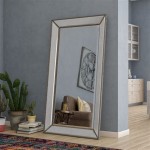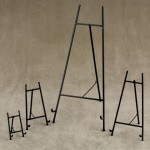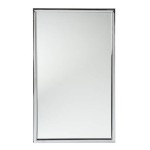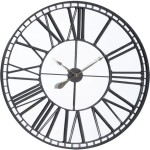How Is a Two-Way Mirror Made?
A two-way mirror, also known as a one-way mirror, is a fascinating piece of technology that appears to be transparent from one side while reflecting light from the other. This intriguing property finds applications in police interrogation rooms, security surveillance, and film sets, creating a sense of mystery and intrigue. But how is this seemingly magical device actually made?
The key to the operation of a two-way mirror lies in its construction. It is not a single mirror but rather a combination of two glass surfaces, with a very thin layer of silver or aluminum coating applied to one of them. This coating is the heart of the mirror's unique functionality.
The Silvering Process: The Key to Two-Way Mirror Functionality
The silvering process, the application of the metallic coating, is the crucial step in creating a two-way mirror. The coating is made extremely thin, allowing a small amount of light to pass through it. When viewed from the side with the thinner coating, the observer sees through the mirror, as the majority of light passes through the coating. However, when viewed from the side with the thicker coating, the observer sees only a reflection, as most of the light is reflected by the silver coating.
The thickness of the silver coating determines the degree of transparency and reflectivity. A thicker coating results in higher reflectivity and less transparency, and vice versa. The precise thickness of the silver layer is carefully controlled to achieve the desired balance between reflection and transmission for the specific application.
The Role of Lighting: Why Two-Way Mirrors Work
The effectiveness of a two-way mirror depends heavily on the difference in lighting conditions on either side of the mirror. The side with brighter illumination will appear reflective, while the side with dimmer lighting will appear transparent. This phenomenon is rooted in the principle of light intensity. When light from a brighter side hits the mirror, it has a higher chance of being reflected back, making the mirror appear opaque. On the other hand, light from a dimmer side has a higher probability of passing through the thin silver coating, creating the illusion of transparency.
For instance, in a police interrogation room, the room with the suspect is brightly lit, while the observation room is kept dark. This dramatic difference in lighting levels ensures that the suspect sees a reflection of the interrogation room, effectively obscuring the observers in the dark room. Conversely, the observers perceive a transparent mirror, allowing them to watch the suspect without being noticed.
Beyond the Silver Coating: The Science Behind Two-Way Mirrors
While the silver coating is the primary component responsible for the behavior of a two-way mirror, other factors contribute to its performance. The thickness and type of glass used in the mirror, as well as the angle of the observer's view, can affect the transparency and reflectivity of the mirror. The angle of incidence, the angle at which light strikes the mirror, also plays a crucial role in determining how much light is reflected and how much is transmitted.
Additionally, the use of specialized coatings on the glass surface can further enhance the functionality of a two-way mirror. Anti-reflective coatings can be applied to minimize reflections and enhance the transparency of the mirror from one side, while anti-glare coatings can reduce glare and improve the visibility from the other side.
The technology behind two-way mirrors is a fascinating example of harnessing the principles of light interaction with materials. By carefully controlling the thickness of a silver coating, the lighting conditions, and the angle of observation, it is possible to create a mirror that appears to be transparent from one side and reflective from the other. This unique property continues to find diverse applications in various fields, making two-way mirrors an intriguing and valuable tool in contemporary technology.

How A Two Way Mirror Works

Two Way Mirror Mirrorworld

Hot Customiz Two Way Mirror And Regular China 2 Mirrors Made In Com

Hot Customiz Two Way Mirror And Regular China 2 Mirrors Made In Com
Vanity 2 Way Mirror Ee Es

China Two Way Mirrors Factory 6mm Mirror Glass S Whole 2

Vintage Divina Make Up 2 Way Mirror W Stand Or Wall Hanging Blue Nip
A Mirror Or 2 Way Glass

Berkfield Half Domed Traffic Mirrors 2 Pcs Diameter 30 Cm Acrylic Diy At B Q

Public Bathroom Made Of 1 Way Mirrors Incredible Things








